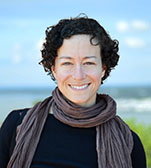Center for Instructional
Innovation and Assessment
INNOVATIVE TEACHING SHOWCASE
2012
2013
Promoting Collaboration
for the Real World
Listed below are selected learning outcomes in the area of critical thinking that Western Washington University is actively integrating into its curriculum. Each learning outcome is listed with its definition, along with a description of how Robin Kodner's teaching strategies meet each of these student learning outcome goals.
Critical Thinking
| Learning Outcomes | Definition | Course Outcomes |
|---|---|---|
| Identification | Accurately identifies and interprets evidence. | The students learn to identify the variables and testable hypotheses throughout the course. They then apply these ideas to a real-world data set by first identifying the variables in the data set and deciding on testable hypotheses given the variables. |
| Alternative Consideration | Considers major alternative points of view. | Hypothesis testing is an exercise in determining if a null hypothesis should be accepted or rejected in favor of an alternative hypothesis. |
| Accurate Conclusions | Draws warranted, judicious, non-fallacious conclusions. | Students have the opportunity to practice this skill though their service learning project, where they have a responsibility to their partner organization to be as accurate as possible in their interpretations. |
| Justification | Justifies key results and procedures, and explains assumptions and reasons. | The students go though a list of formal steps to data to make sure it fits the criteria for each statistical test chosen. The students must record all these tests and assumptions so the process of analysis is transparent to me and to the partner organization. |
Source: Adapted from the California Academic Press's Holistic Critical Thinking Scoring Rubric (HCTSR).
Quantitative Reasoning
| Learning Outcomes | Definition | Course Outcomes |
|---|---|---|
| Mathematical Information | Represent mathematical information symbolically, visually, numerically, and verbally. | Students learn the theory and basic mathematics behind statistical tests, and then learn when to apply the appropriate methods. |
| Mathematical Methods | Use arithmetical, algebraic, geometric, and statistical methods to solve problems. | This course inherently incorporates mathematical methods for analyzing data. |
| Mathematical Models | Interpret mathematical models such as formulas, graphs, tables, and schematics, and draw inferences from them. | Students learn the basic conceptual theories behind the statistics they will use to analyze data and do practice problems by hand, on problem sets, and in groups. |
| Estimate and Check | Estimate and Check Estimate and check answers to mathematical problems in order to determine reasonableness, identify alternatives, and select optimal results. | Students taught to �sanity check� results, by going back to the data to make sure results are reasonable. They must also first make sure data meets all the assumptions and requirements to run every statistical test. In the final projects, they practice this process repeatedly, building confidence and familiarity with the process. |
| Mathematical and Statistical Limits | Recognize that mathematical and statistical methods have limits. | Students learn to define exactly what statistical test results mean and describe each analysis in their final reports. |
Source: Based on the Mathematical Association of America's quantitative literacy requirements for all students who receive a bachelor's degree.

